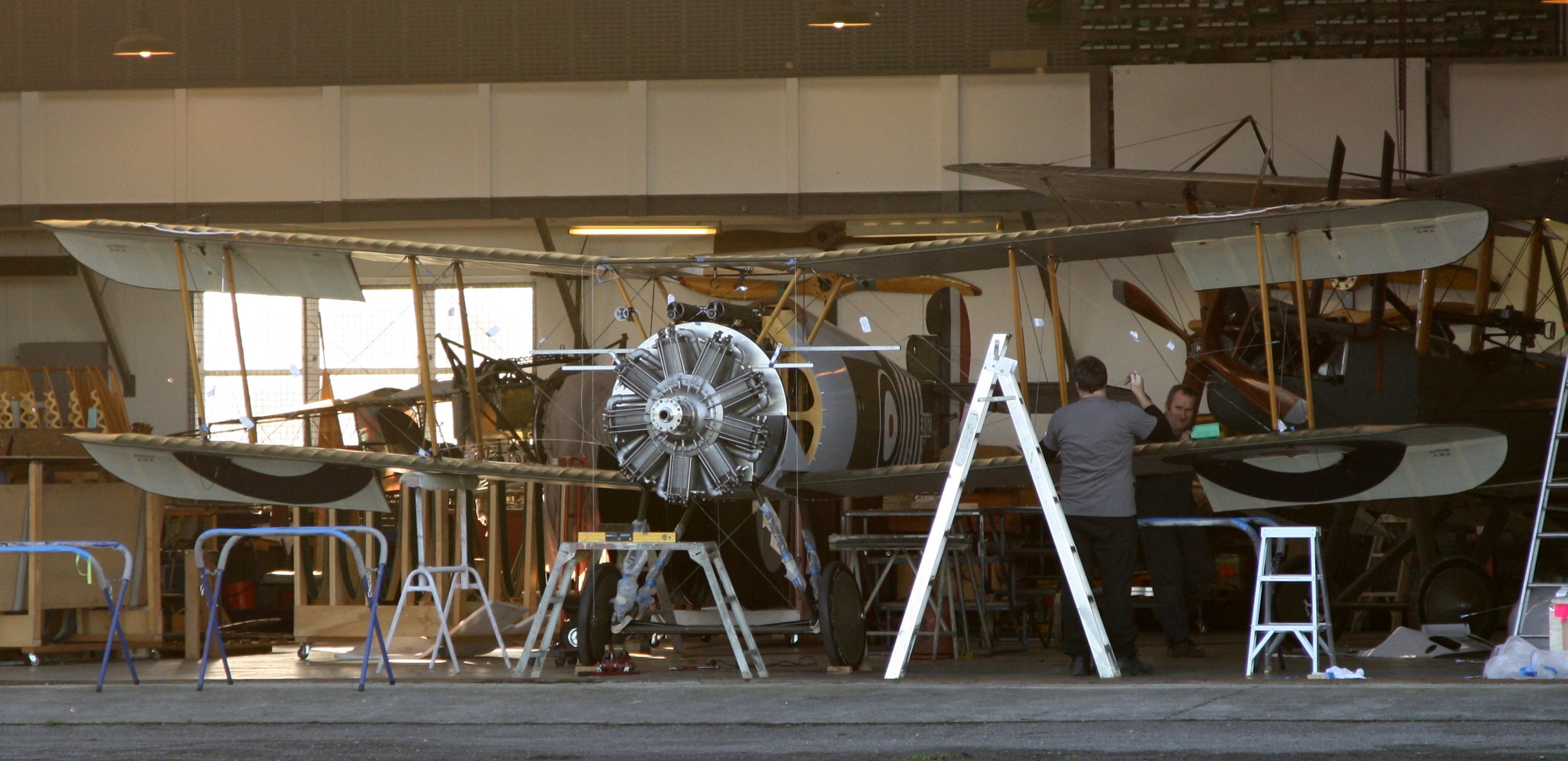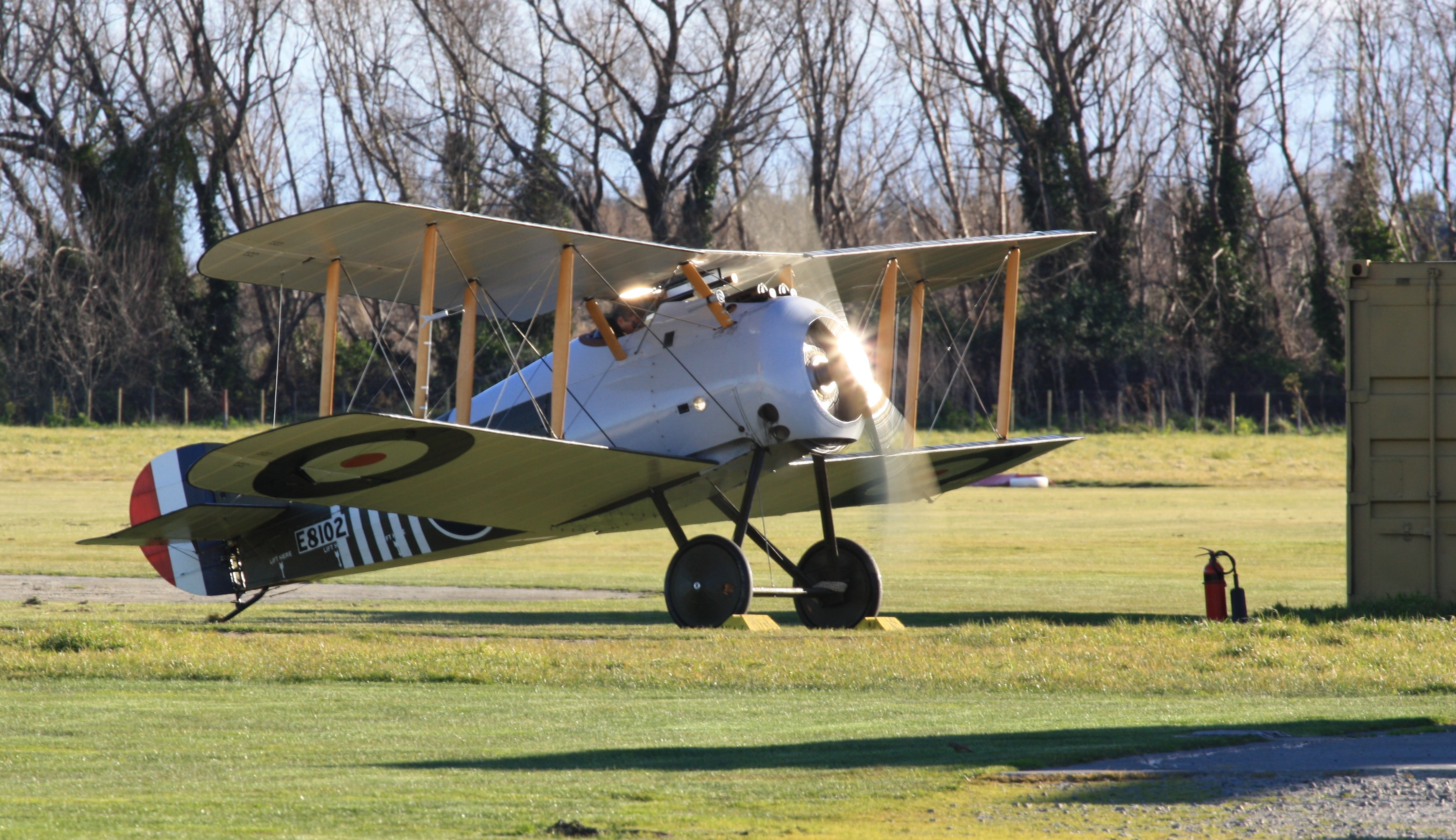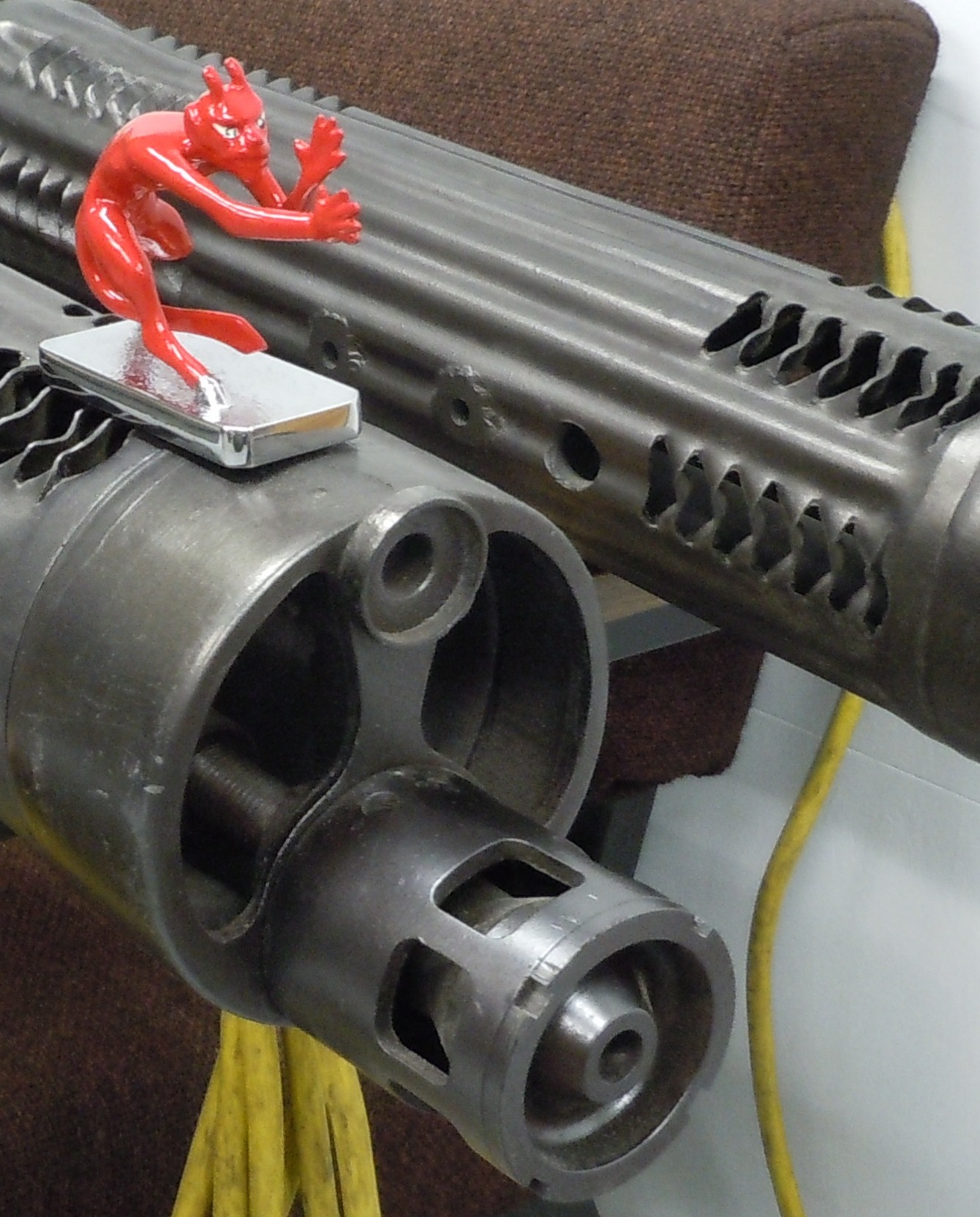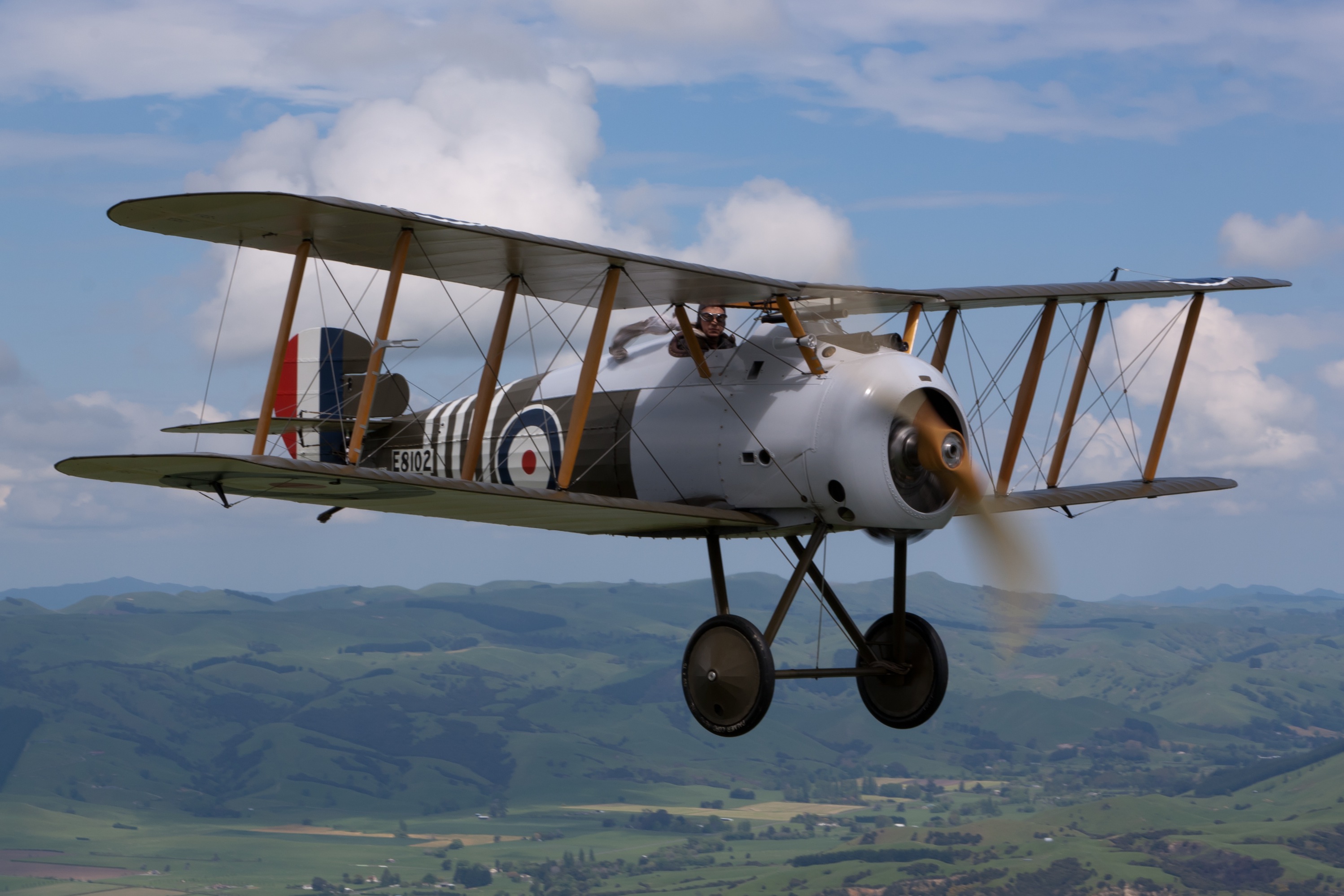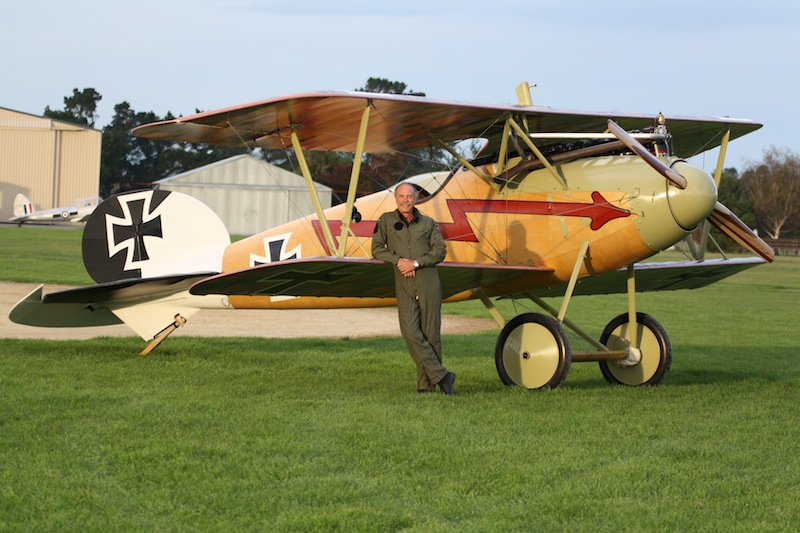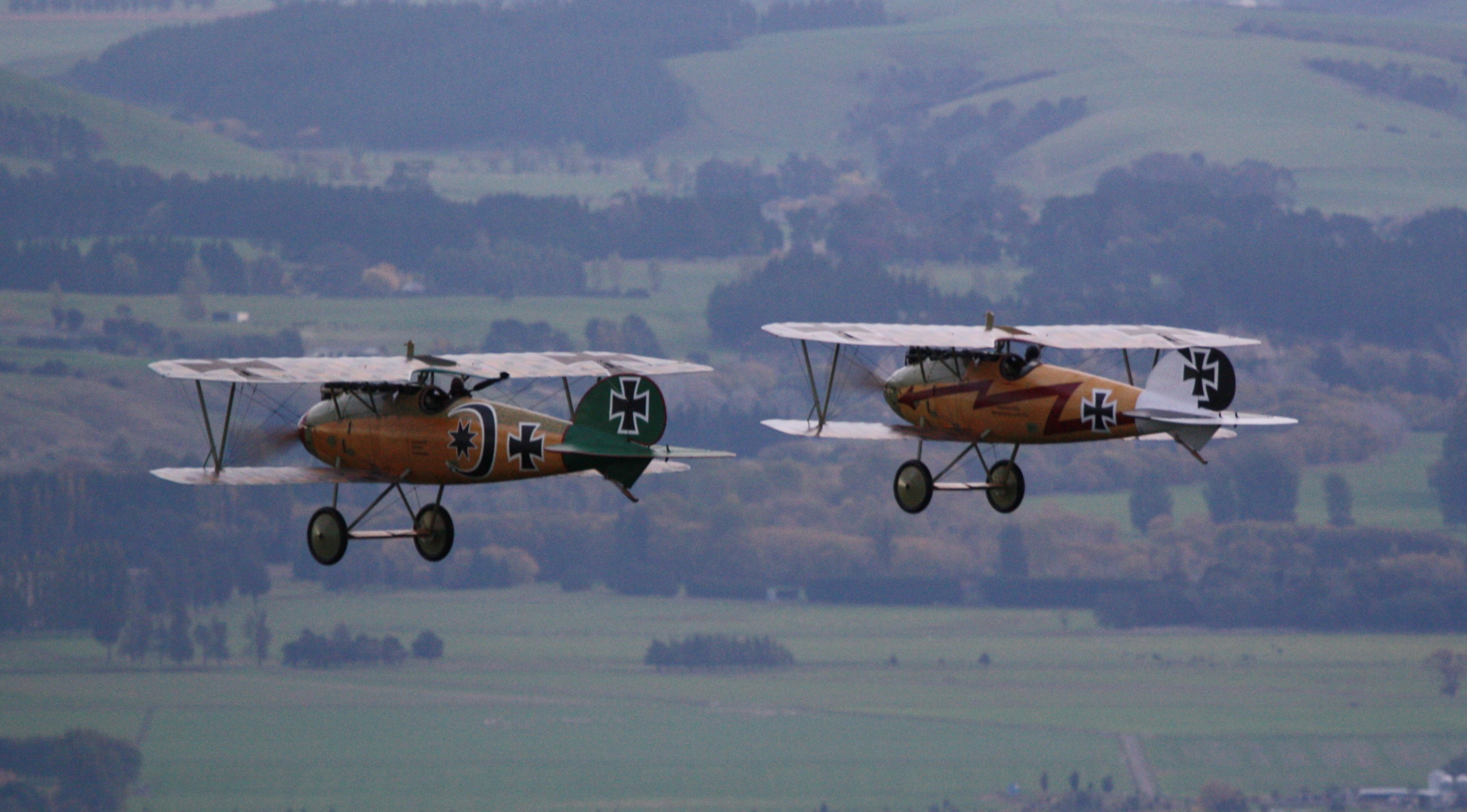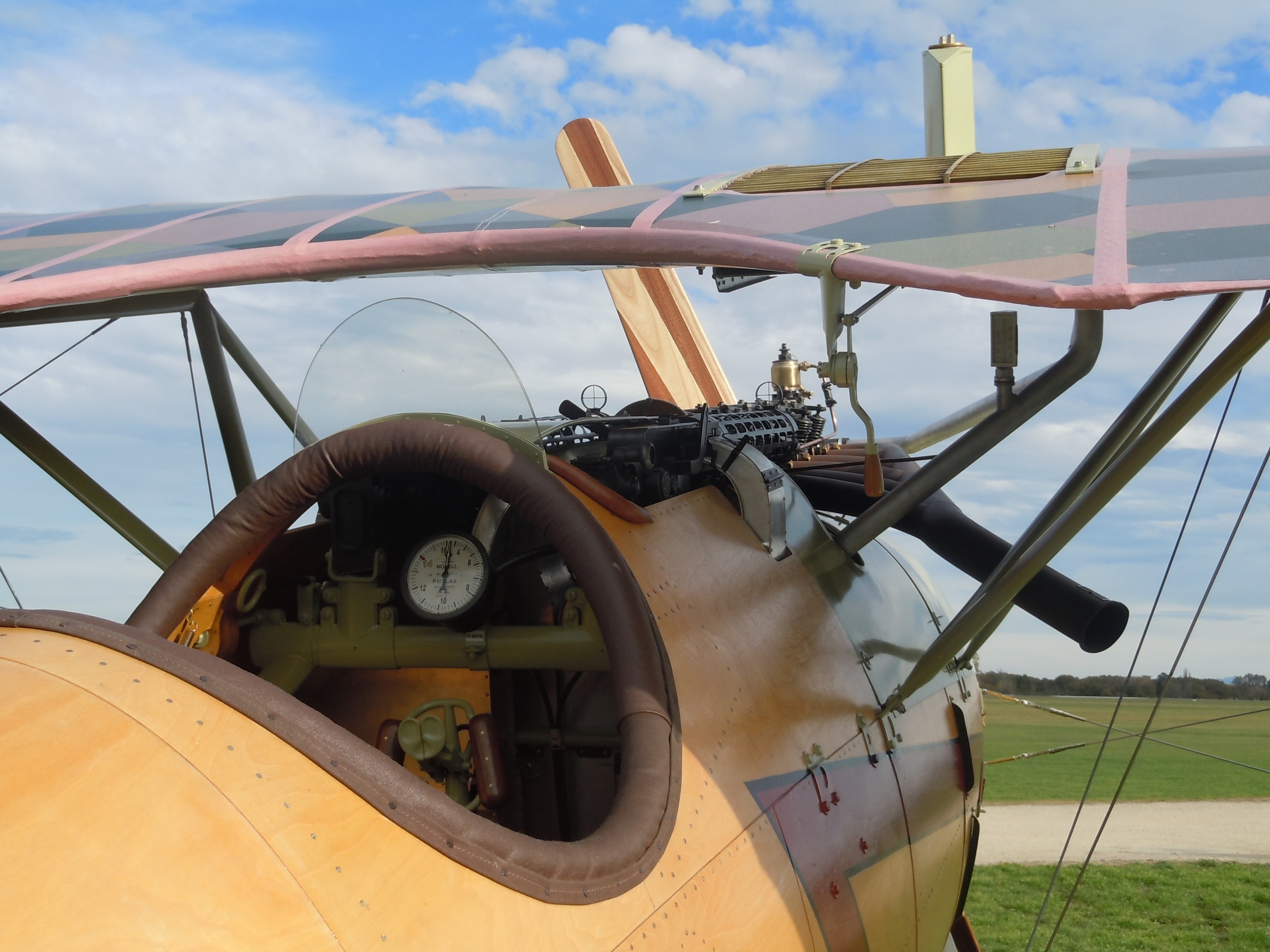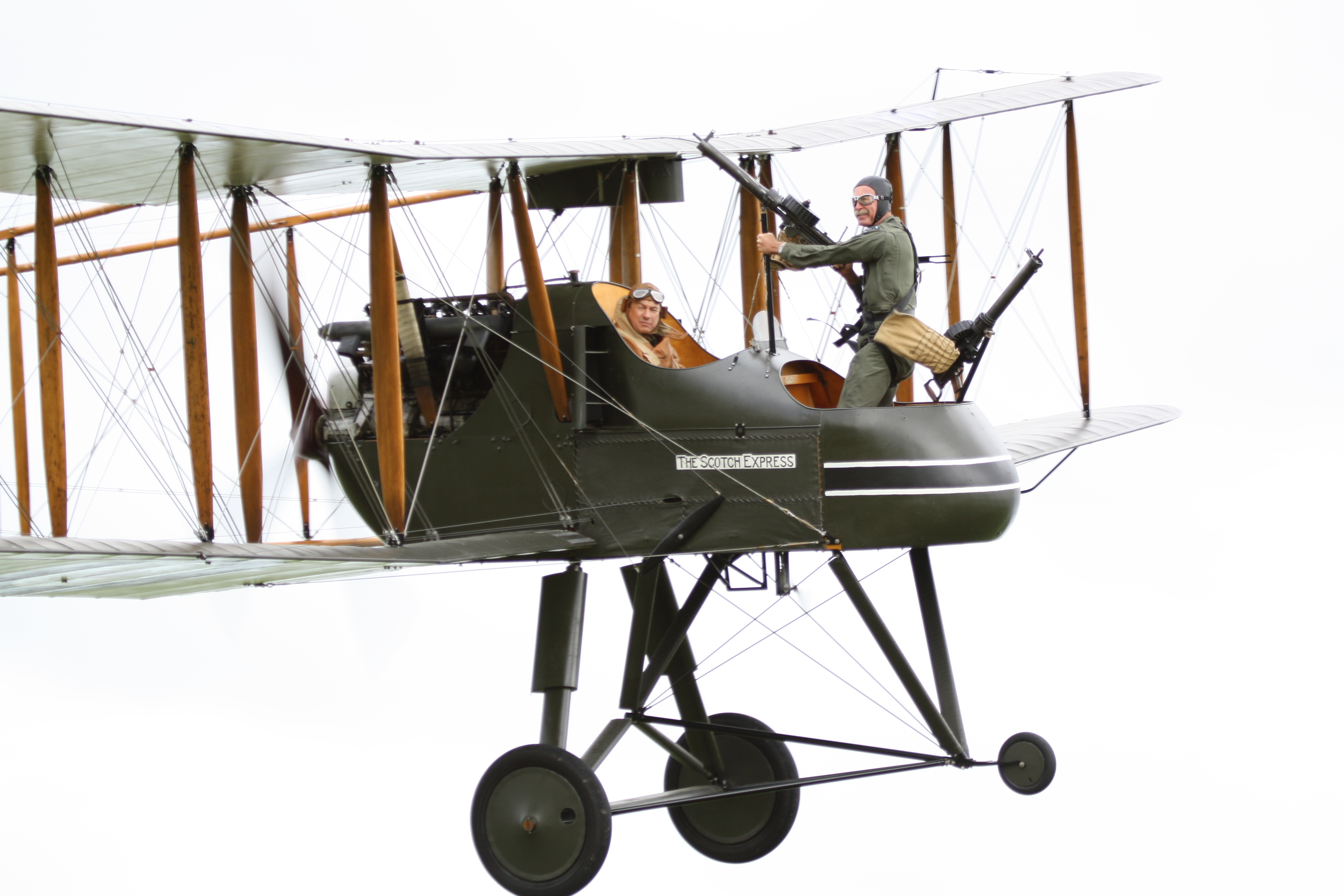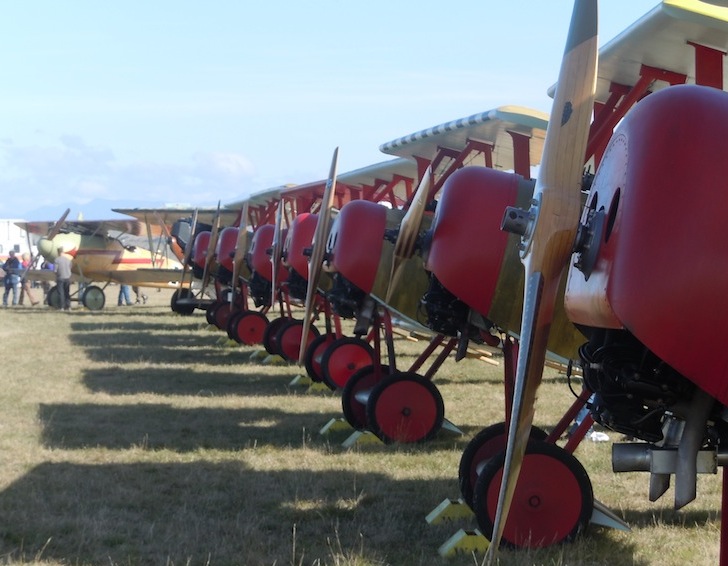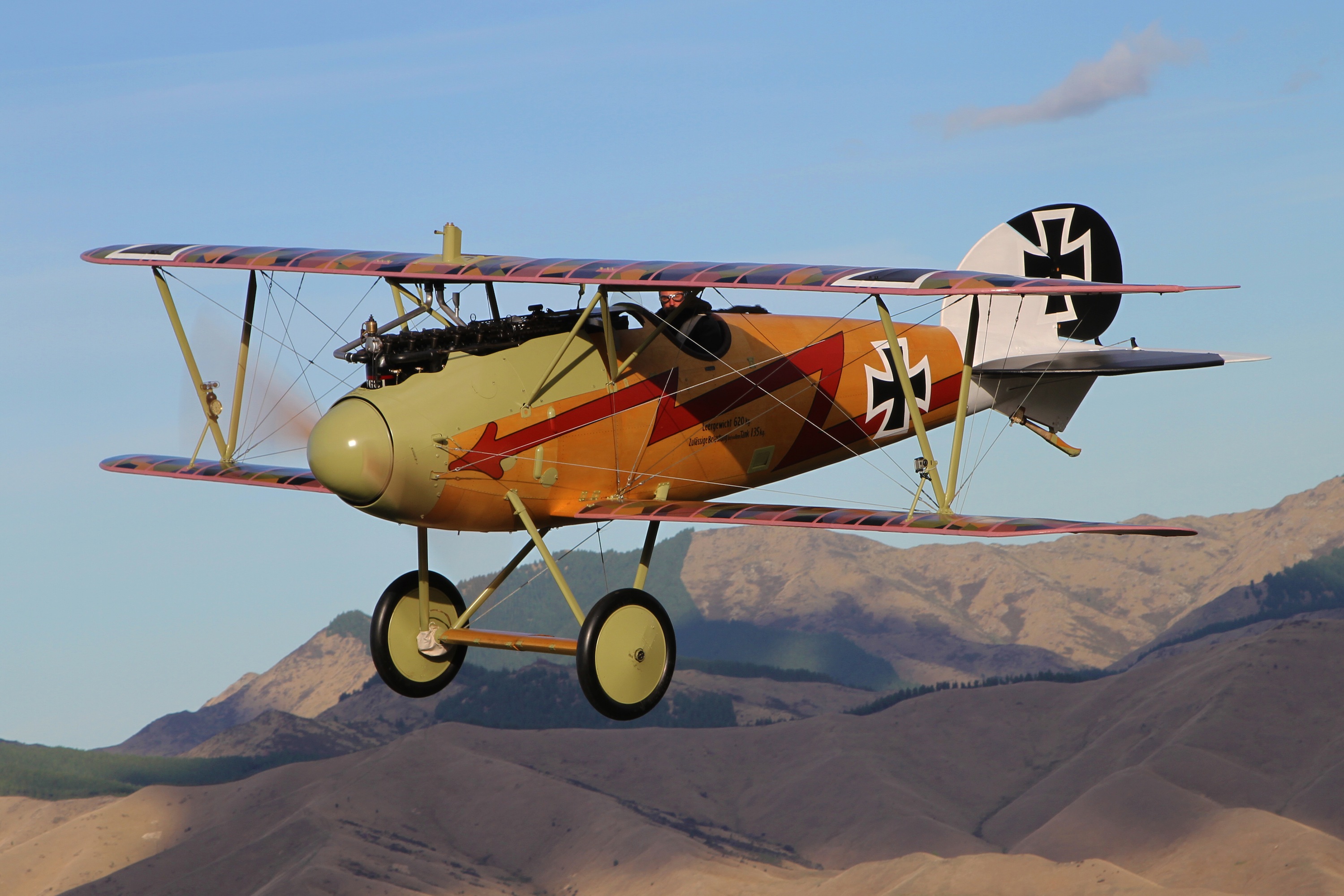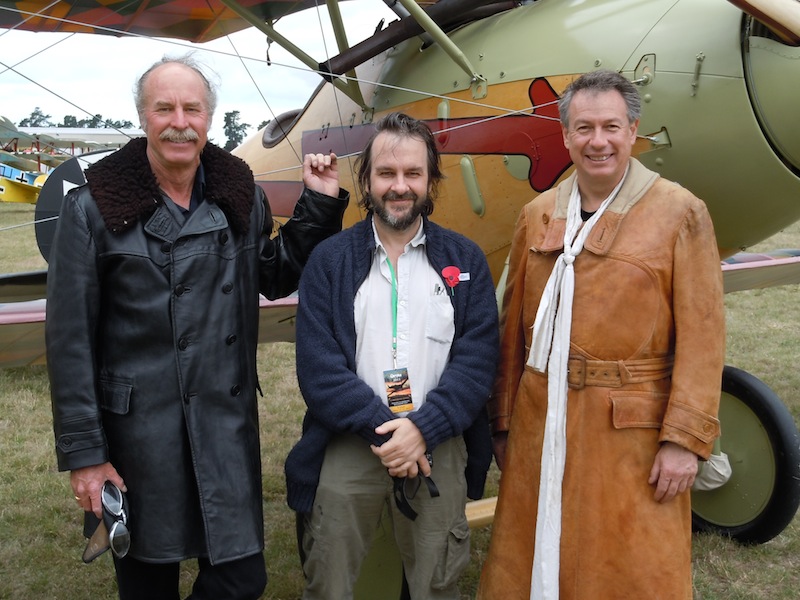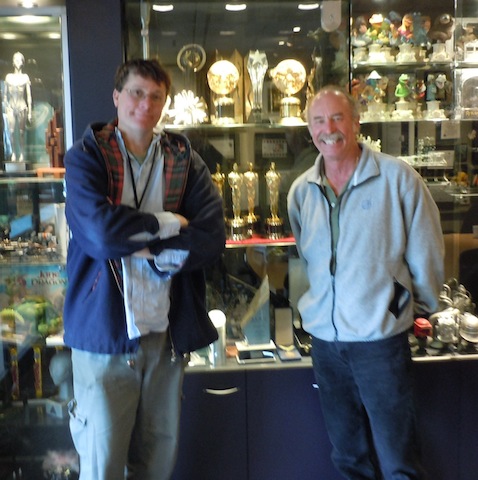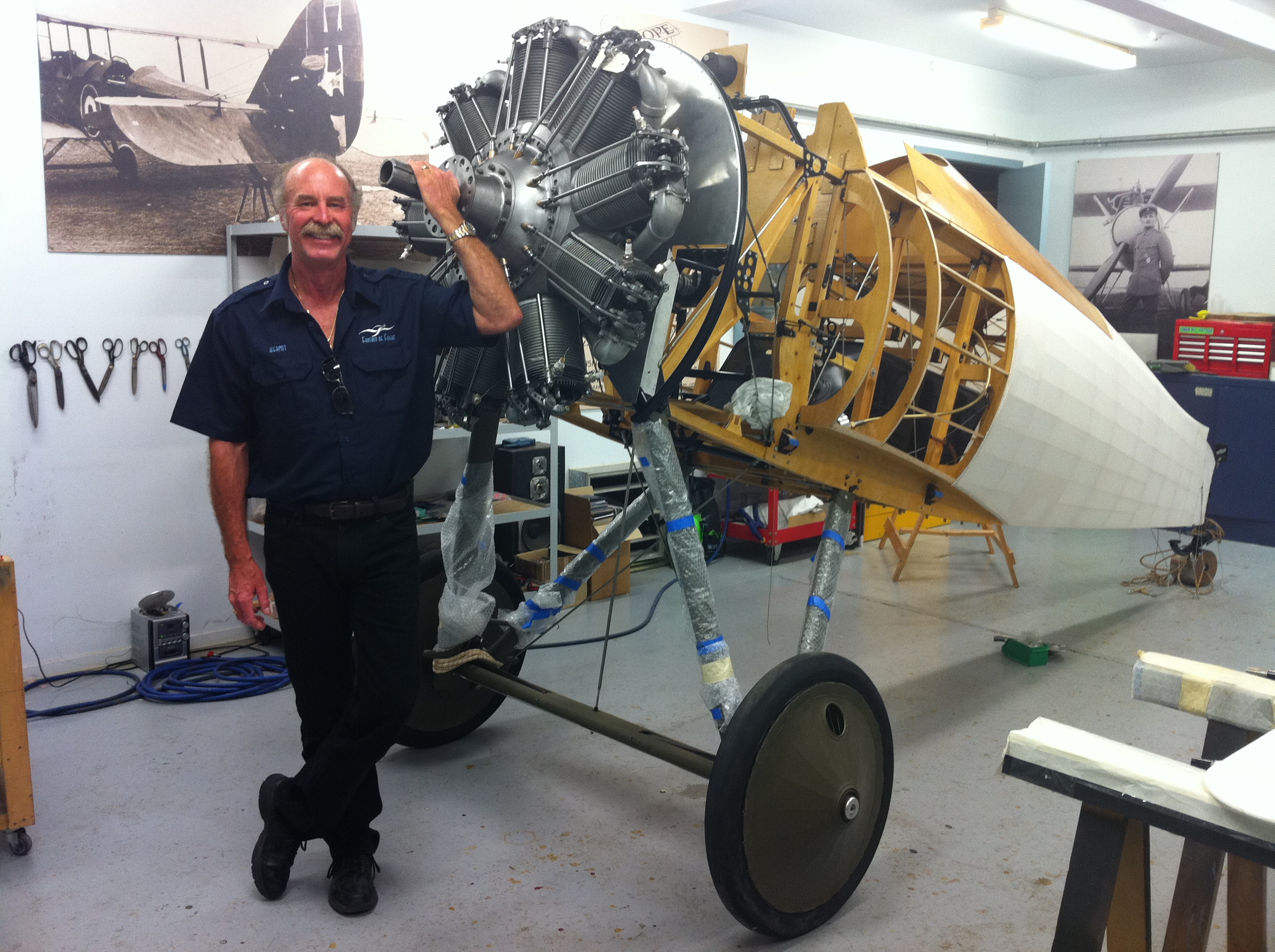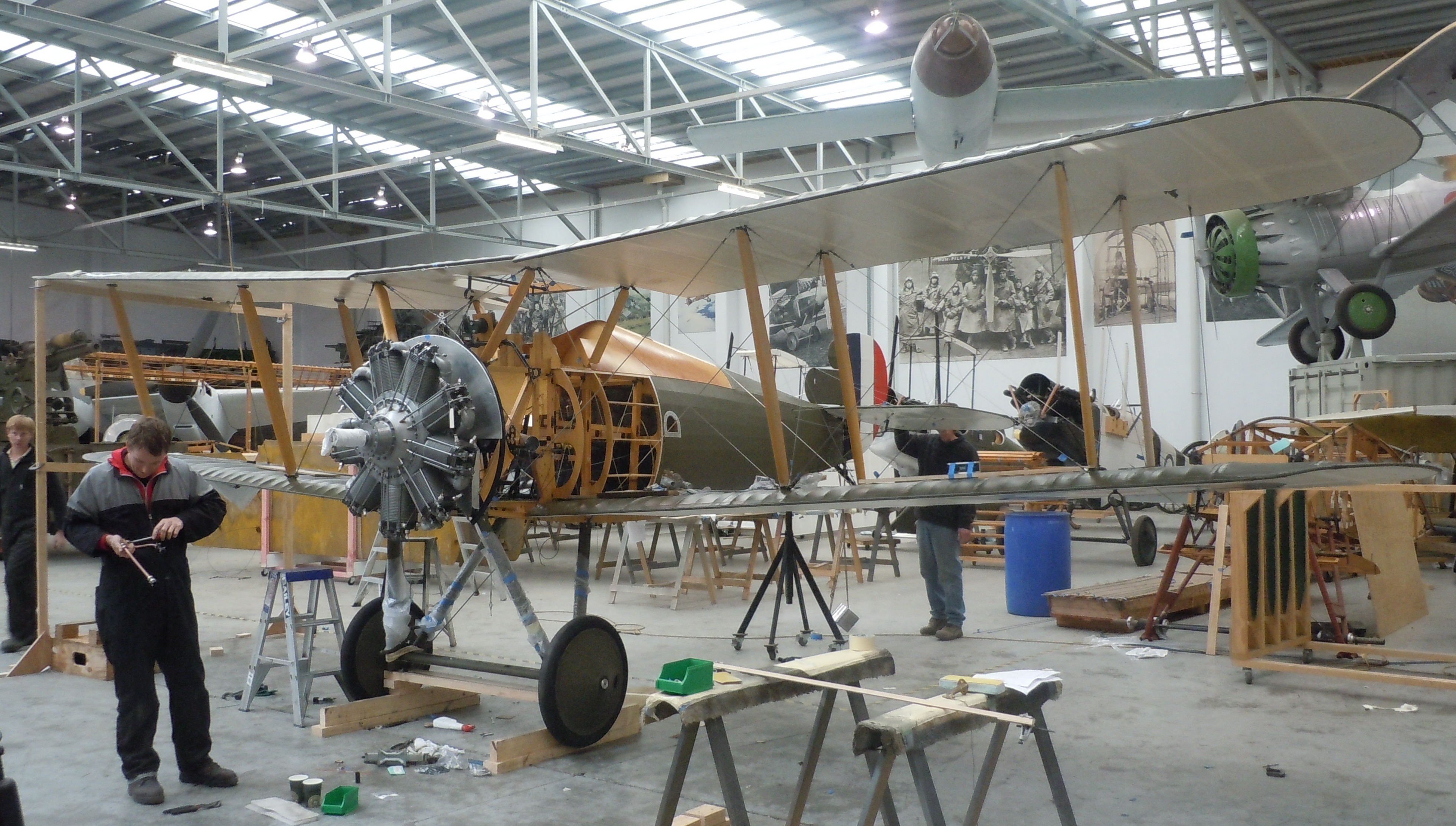I recently had the opportunity to fly a beautiful Albatros reproduction in the Shuttleworth and Duxford Airshows just outside of London. My good friend Gene DeMarco from TVAL (The Vintage Aviator Limited) invited me to fly it while he flew an Re-8. His boss Peter Jackson had them both built for an undisclosed trade with the RAF Museum at Hendon.
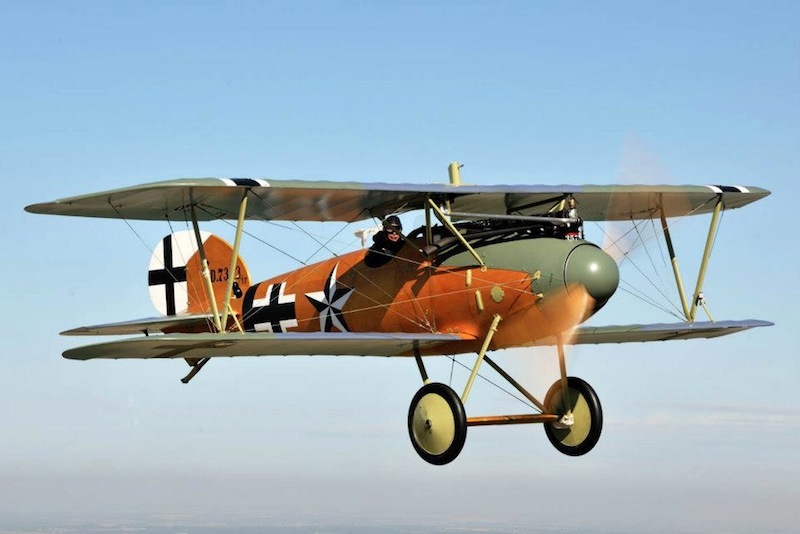
Flying a TVAL built Albatros destined for the RAF Museum (Photo by Keith Wilson)
By the time I got to England, Gene and the mechanics had assembled both aircraft and we soon were test-flying them over the English countryside.
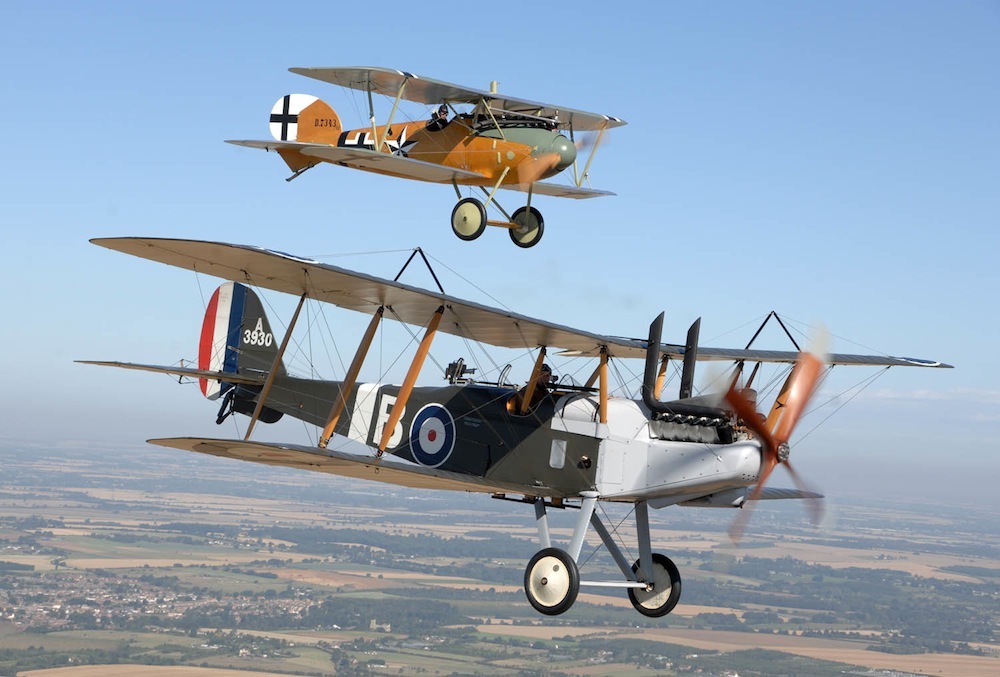
Gene in the Re-8 and me in the Albatros over the English Countryside! (Photo by Keith Wilson)
We got to stay in a wing of the Shuttleworth Mansion, which was owned by Richard Shuttleworth, who began collecting and flying vintage airplanes prior to WWII. Unfortunately, he was killed during the War but his collection continues to be displayed and they fly shows during the summer months.
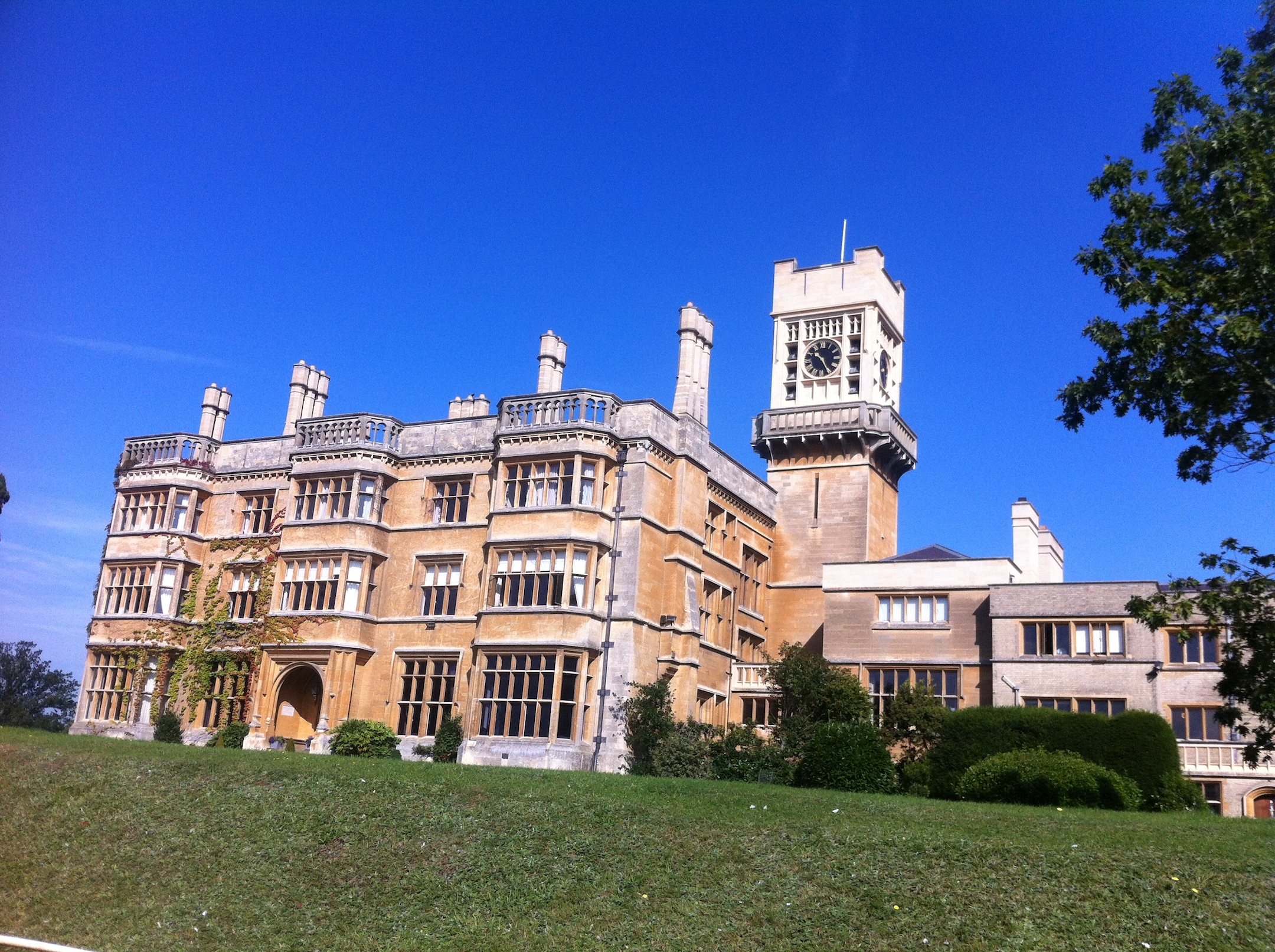
The Shuttleworth Mansion!
I had visited the Shuttleworth Collection many times in the past but had never been to one of their shows! This was to be a first of memorable proportions!
We flew a Sunday Show at Shuttleworth and then the following weekend at Duxford about 20 miles away; home of the Imperial War Museum. The airplanes were still technically owned by The Vintage Aviator Limited but, much to the delight of the local aviation enthusiasts, Peter had offered to let them fly for the public before they actually changed hands.
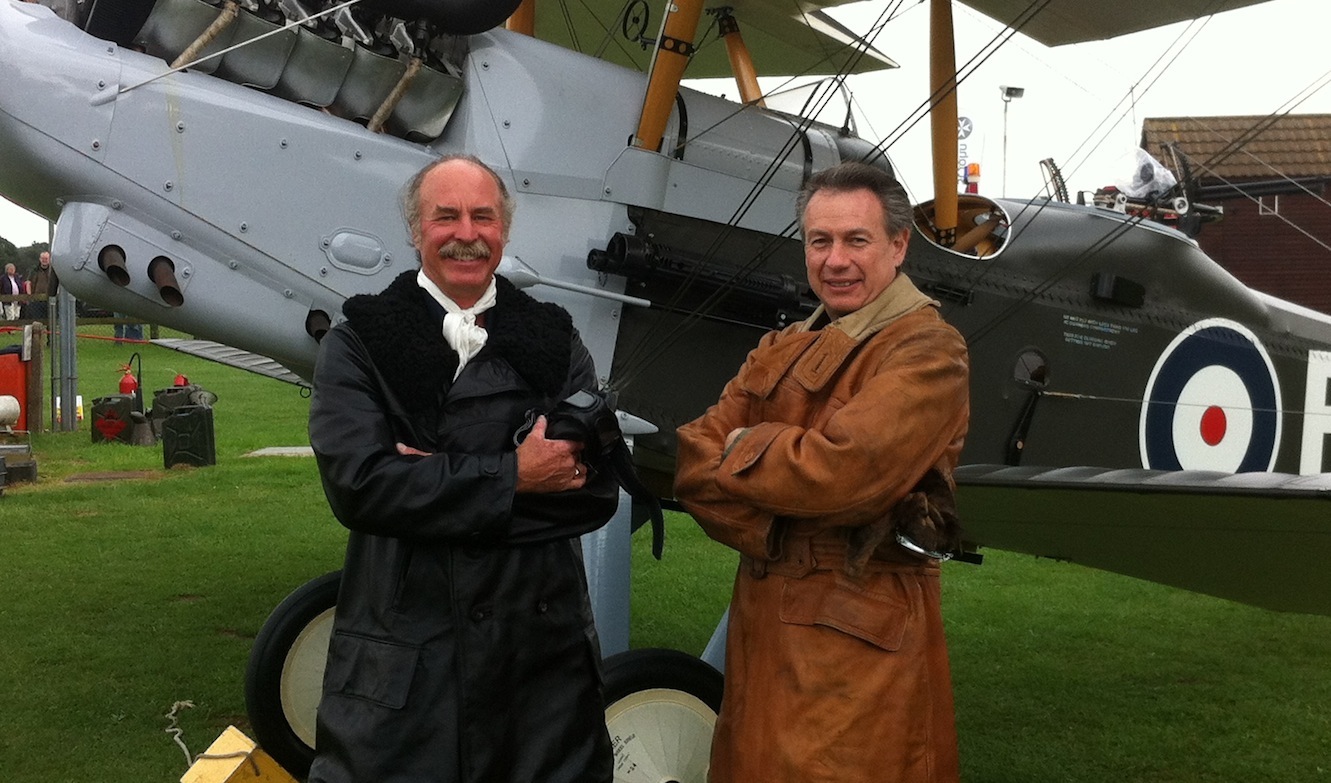
Gene and I in front of the Re-8 about to go on a sortie!
Gene had the capability of taking up “tail gunners” and gave a number of rides to the mechanics and volunteers at Shuttleworth and the RAF Museum, which is something they rarely get to do. Of course, I took every opportunity to fly the Albatros to give them the exerience of what it must have been like in WWI with an enemy aircraft bearing down on them.
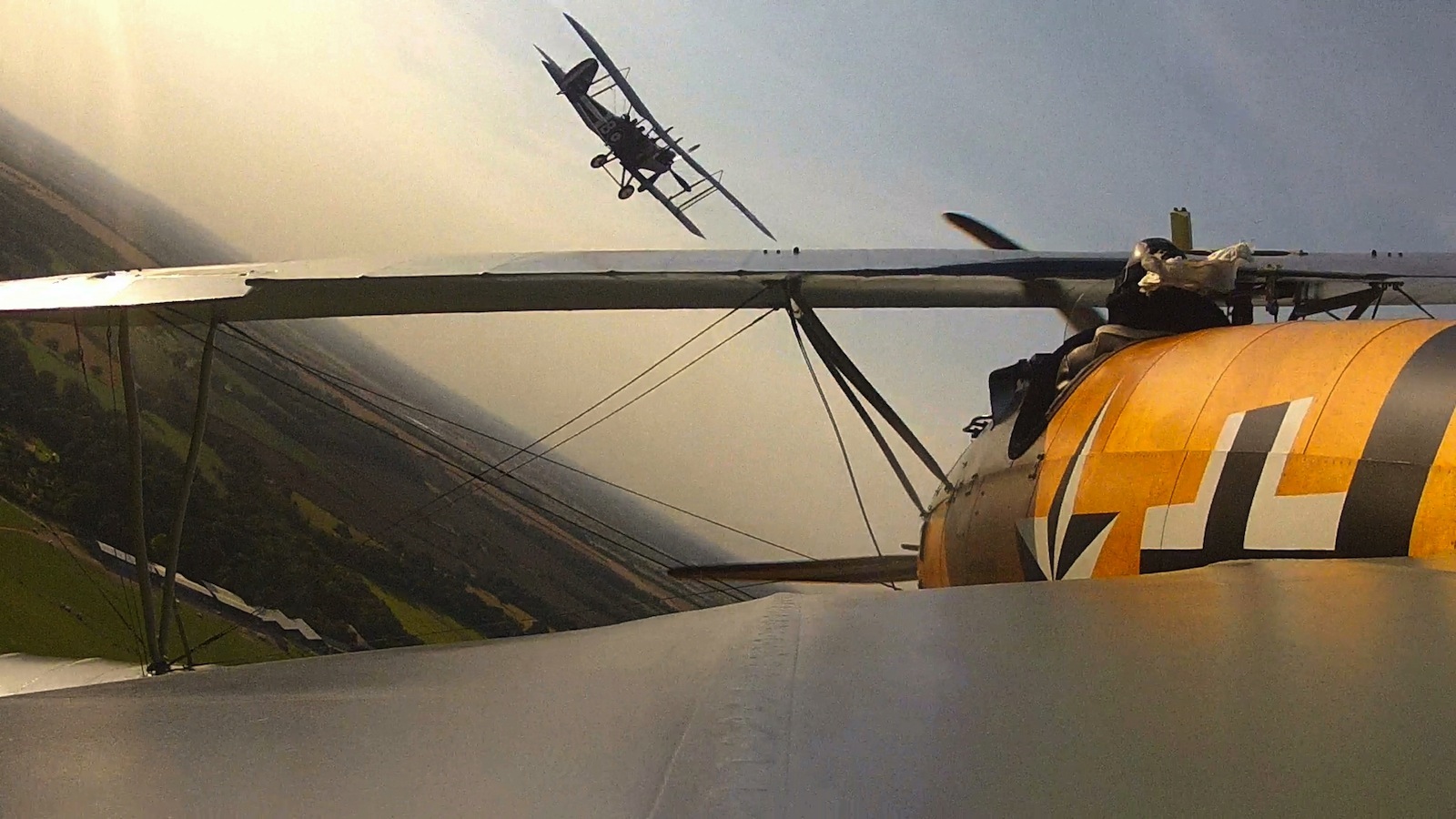
Gene and I give Re-8 riders the experience of a lifetime!
Gene and I both brought several GoPro cameras each and used them on every flight, changing locations many times to get different perspectives. There were plenty of other cameras in the air and on the ground and we all got a chance to share photos as well as video footage.
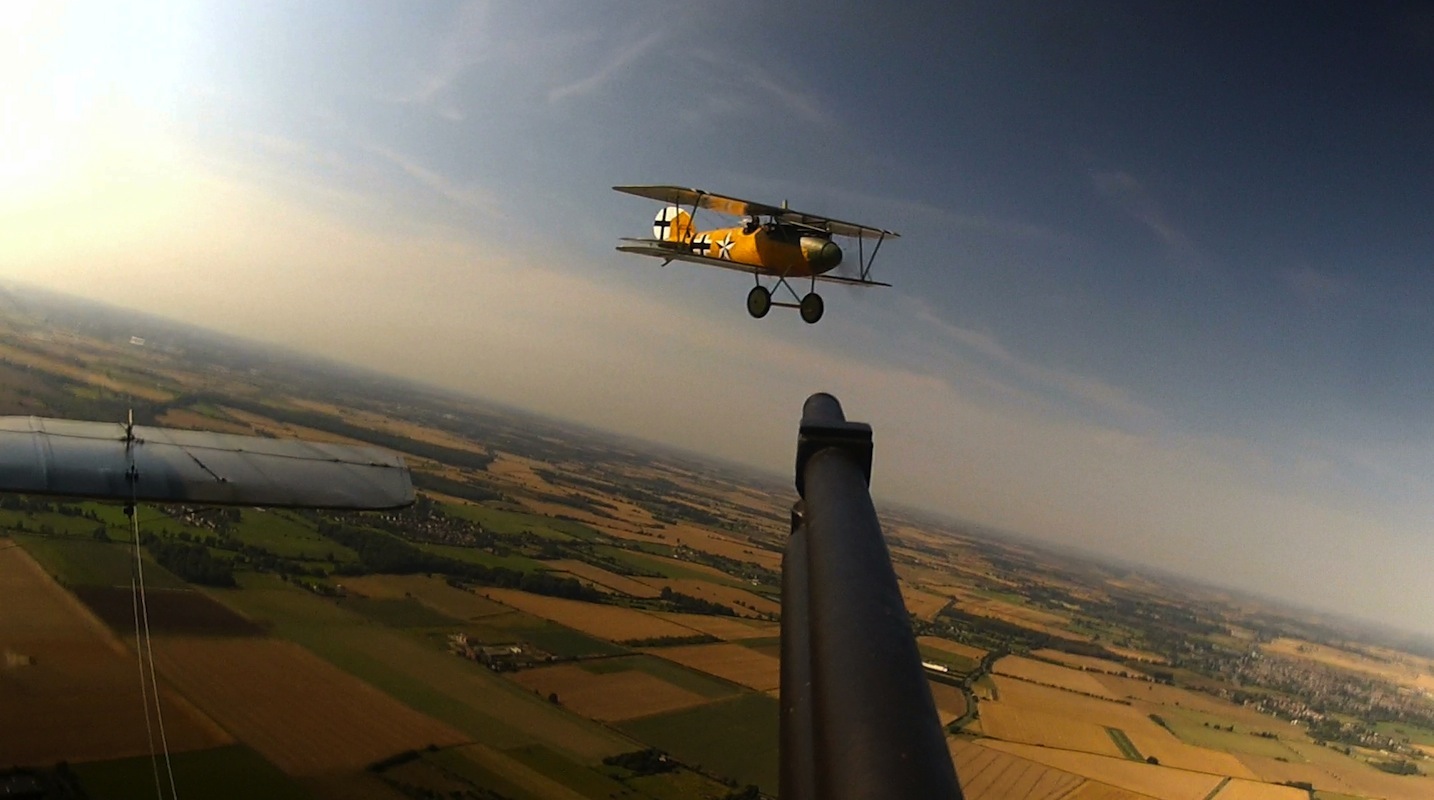
A gunners view from the Re-8! Fortunately for me, he was out of ammunition at the time!
The original Mercedes engine used in this Albatros was supplied by the RAF Museum. Since the airplane was not meant to continue flying, they kept as many original parts in the engine that might have been replaced. Consequently, it tended to leak a bit of oil and I always took several rags with me flying, continually having to wipe the windshield down soon after takeoff.
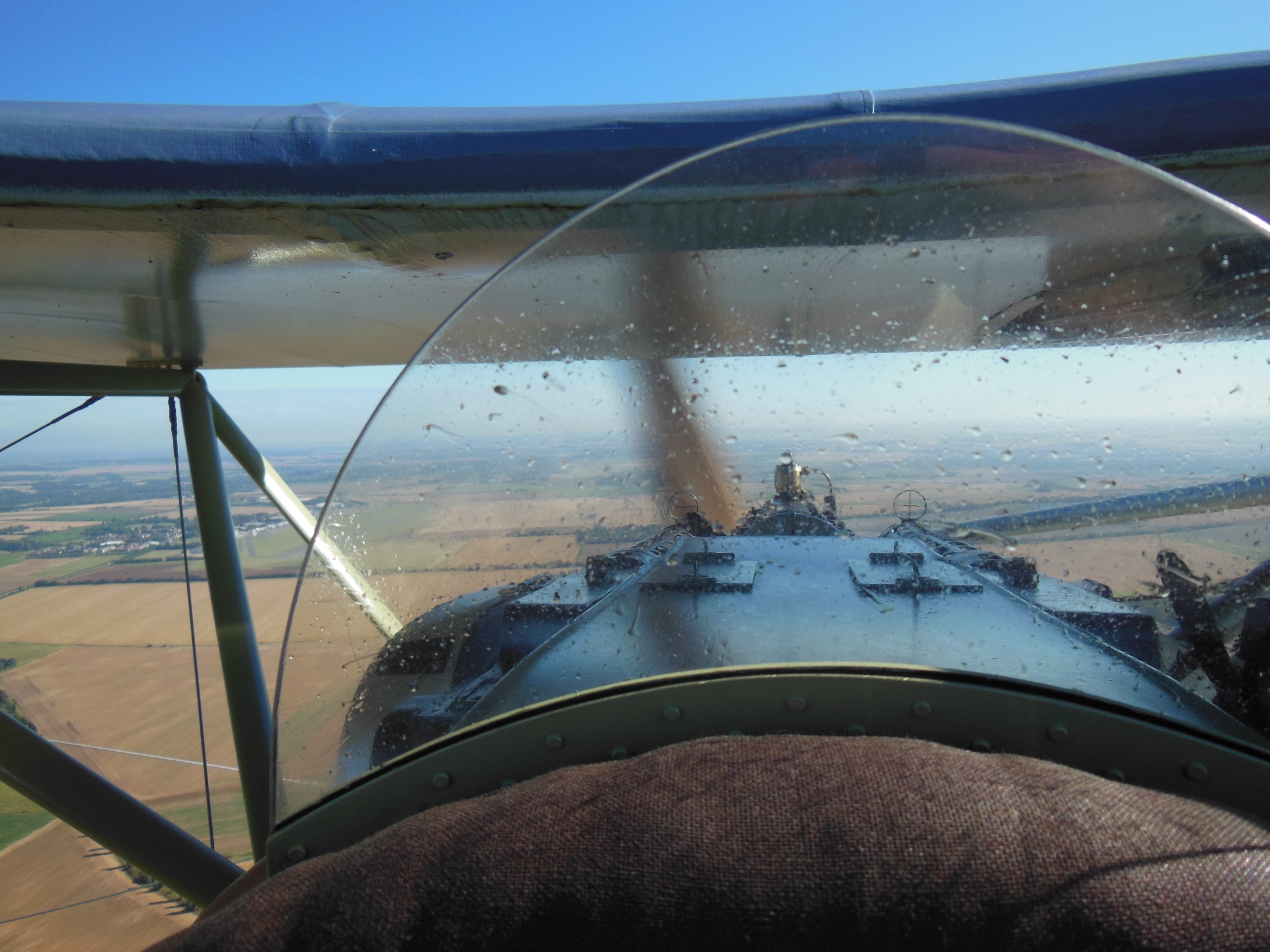
An oily windscreen is not helpful when engaging the enemy!
It was a great experience and a lot of fun doing photo missions and dogfighting with Gene. During the actual shows, we would alternate following each other for the crowd in a figure-eight pattern. Unfortunately for Gene, he could not take a passenger (tail gunner) with him during the actual show flights so, he was pretty much a sitting Duck for the Albatros! :-)
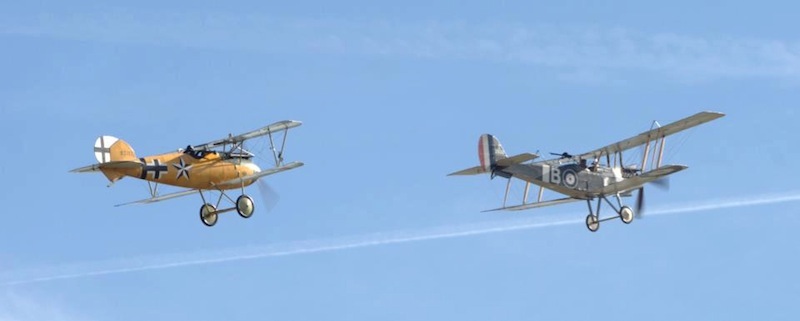
An easy kill!
One gorgeous evening I spotted a giant hot air balloon overhead at about 2000 feet. We were about to fly anyway, so I took off early and started climbing with two cameras rolling; one on my tail and one on my right strut, both looking forward. It turned out to be a ride balloon owned by Richard Branson with about 15-20 people in the basket! I had never seen such a big balloon and made several passes around it, sometimes with it in my sights.
I purposely didn’t venture as close as I would have liked but found out later the waving guests enjoyed every minute of it. Without a parachute, I was a lot happier when I got back down to a lower altitude! Later, Gene and I found out we had both made the Virgin Balloon website! I sent them several shots from my “gun cameras,” including this one, which they later posted.
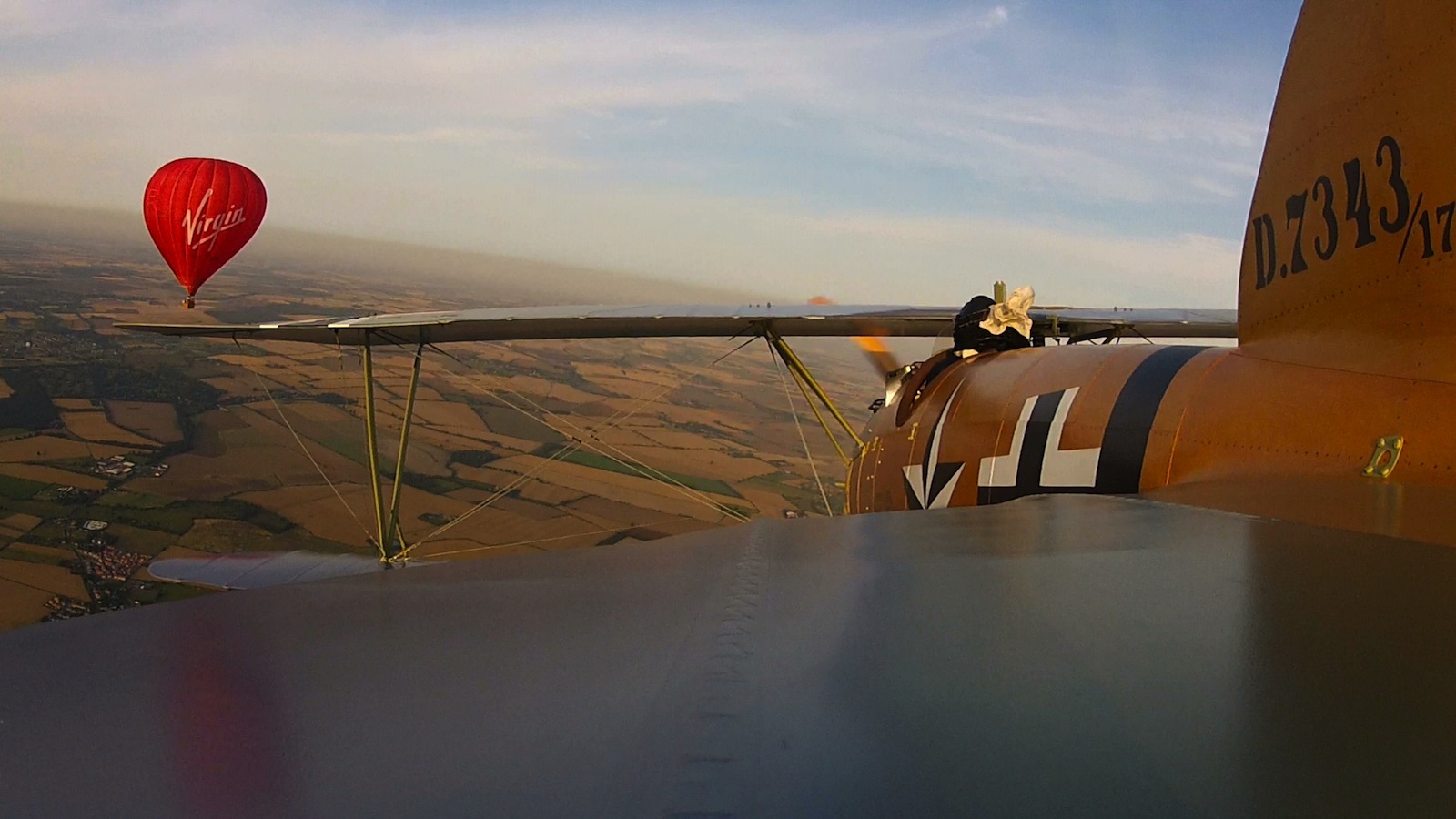
Bagging my first balloon . . . and a Virgin one at that!
One of my more memorable flights was a photo mission over the original WWI Airship Sheds at Cardington. This was a Restricted Area and we had to get special permission to fly over them. I can only imagine this had to be the first and only time this ever happened!
Not only did I get the opportunity to shoot down the Re-8 many (actually many, many times) but I also got to shoot down a balloon and bomb enemy Airship Sheds! The Kaiser would have been proud!
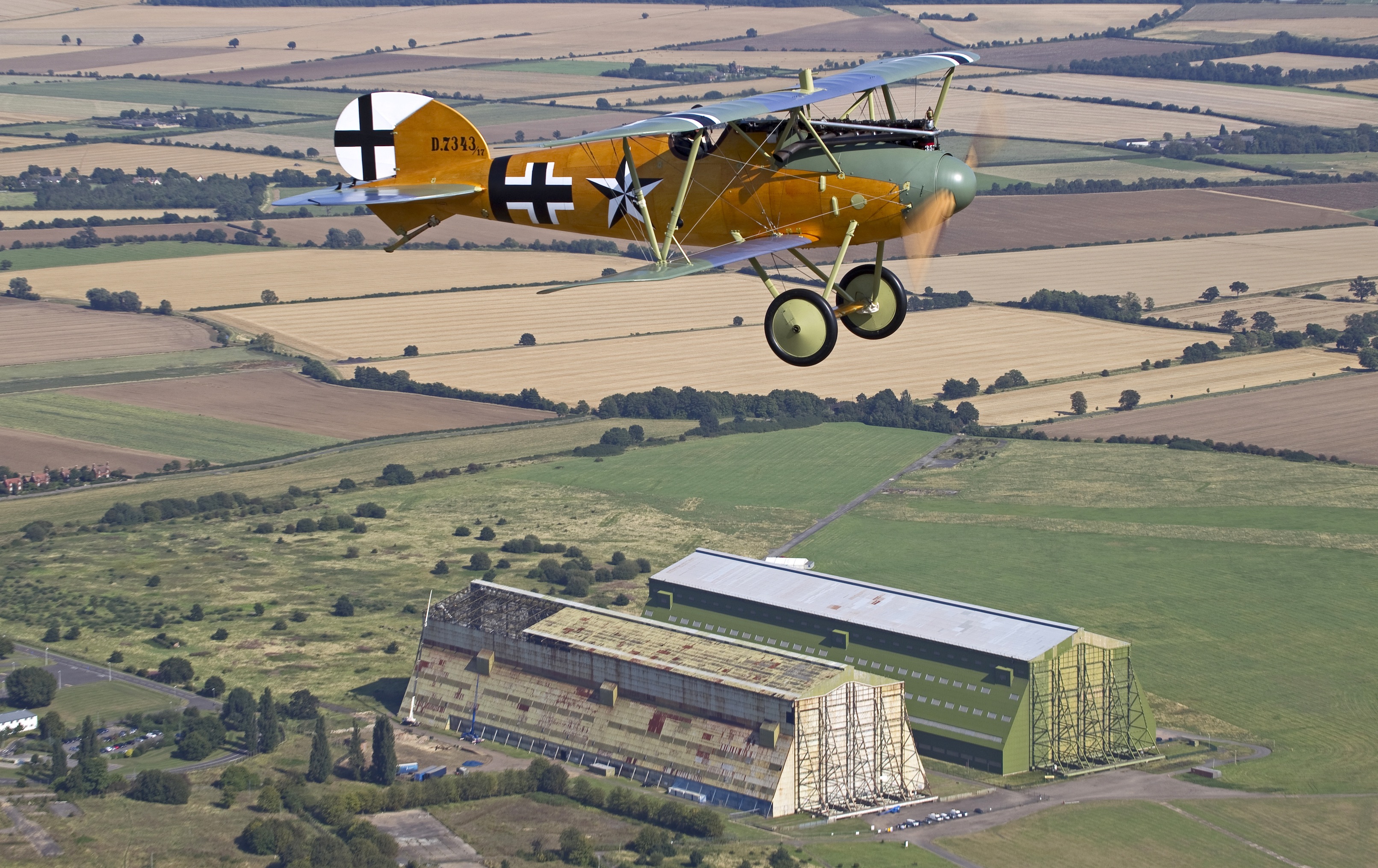
Over enemy Airship Sheds at Cardington (Photo by Darren Harbar)
One fun thing that happened was that, at some point, one of the Shuttleworth pilots showed up with a ponytail hat; obviously as a subtle joke poking fun at mine. Several tried it on for pictures and by the time we got to Duxford it was not so subtle, as most of the pilots were now wearing them. Here’s a shot after one of the pilot briefings!
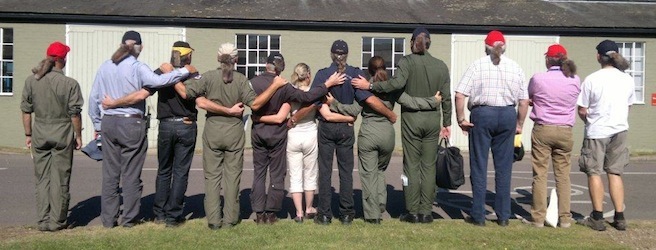
Ponytail Row!
While I’ve heard that “imitation is the most sincere form of flattery,” I think there was some plain fun going on here as well. One thing is for sure . . . they’ll be talking about those two crazy Americans that showed up adding some spice to their airshow season for quite some time!
I did a lot of Facebook posting while I was there and was surprised to discover during my visit that my “Most Popular City” was London, England! Too cool!
Did I have a good time? I think this picture says it all!
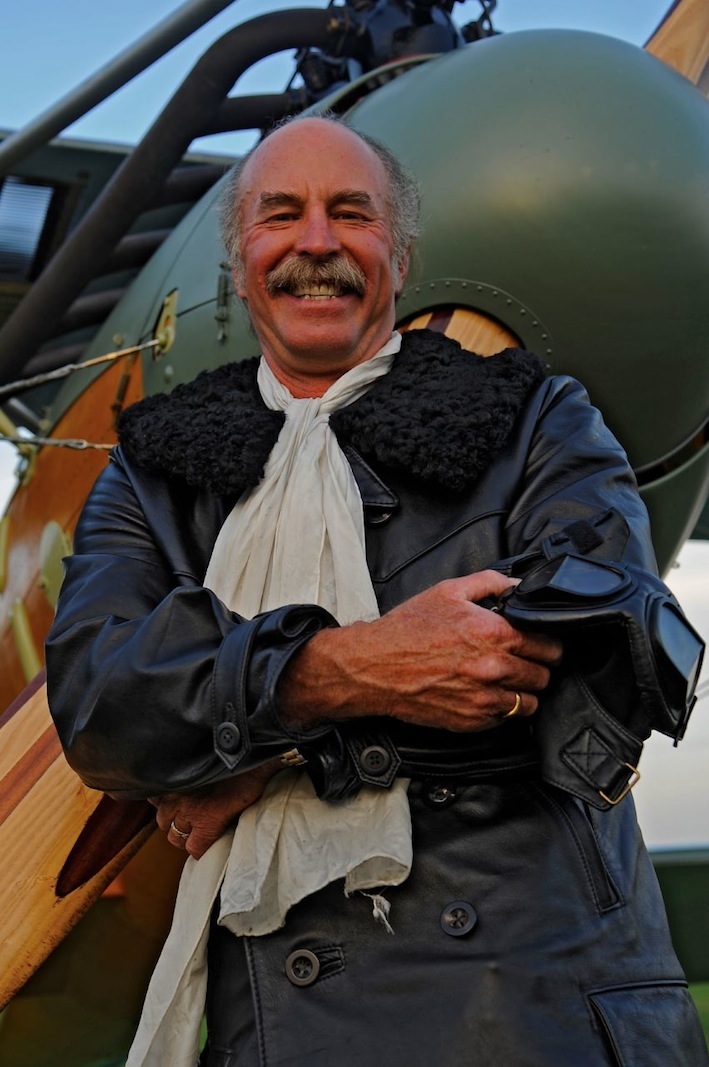
One happy Albatros Pilot!
Kermit
